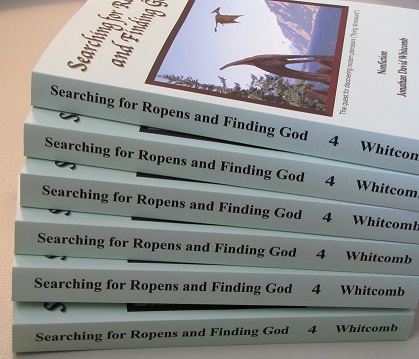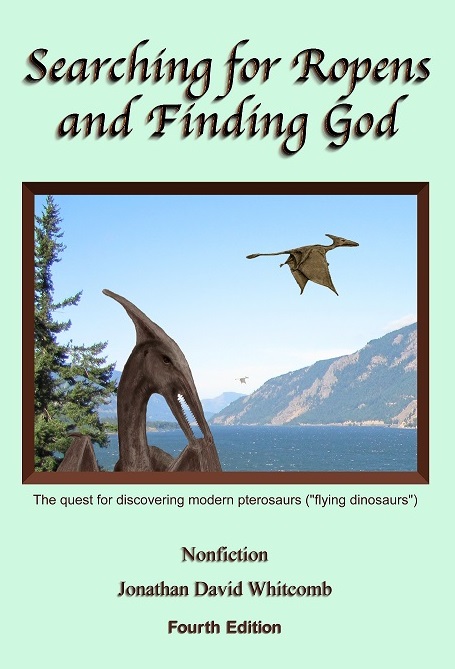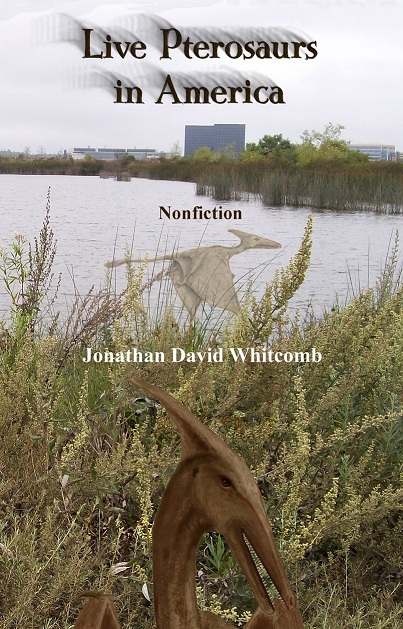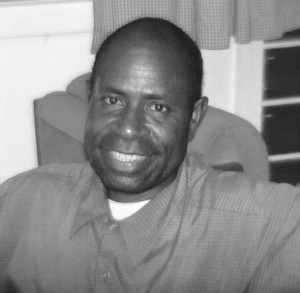The apparent Rhamphorhynchoid pterosaur called ropen is a cryptid, and that means we are dealing with cryptozoology. Scientific methods may be used in researching and searching in cryptozoology, yet a cryptid, by definition, is not an animal being studied in a laboratory, by a science professor; it is a creature known more from eyewitness testimony.
One paleontologist, Dr. Donald Prothero, has gone far astray from scientific methods in his post about “fake” pterosaurs. It’s devoted to attacks against me, Jonathan Whitcomb, as he mentions my religious beliefs and proclaims my dishonesty, in spite of my explanations for my use of two pen names in a minority of my writings.
The question now is this: Is it better for a scientist to use non-scientific methods to ridicule, through bulverism, someone he disagrees with or for a cryptozoologist to use scientific methods to examine the credibility of the existence of the cryptid called ropen? I choose the latter.
I now respond to Dr. Prothero by quoting from my Searching for Ropens and Finding God (4th edition).
The paleontologists are rare who take notice of my associates and me, at least through mid-2014. When one has commented on what we declare about modern pterosaurs, it’s usually with a word like “extinction” but in a difference sense: the demise of all species of pterosaurs. Am I slicing quarks? I know of nobody who denies that many pterosaurs may have lived without leaving any fossil. Beware of the fog around two meanings of a word. Even if all species of pterosaurs known from fossils had become extinct long ago, we live in the real world of the present, a world in which people report encountering living pterosaurs. [page 293]
Mr. Collini and Mr. Cuvier [two centuries ago] assumed the strange creature that left fossil evidence of its existence was extinct. What else could they think? They knew nothing of anything like that in the modern world. Now look at the key word: assumed.
Almost all biologists, from then until now, have assumed all species of pterosaurs became extinct, for those humans apparently knew nothing of anything like them in the modern world. Paleontologists are even more rare than eyewitnesses of ropens, and if one fossil expert saw one dragon fly overhead, how could the encounter be reported? That eyewitness would probably say nothing.
Gradual accumulations of new fossil species were too gradual to alert anyone. Alert them to what? Simple probability. If we were to dig into a cliff, looking for fossils, what might we find? Quite likely we would uncover a fossil of something quite similar to a modern organism, for those are common. If paleontologists had examined objectively the axiom of pterosaur extinction, over the past 200 years, they would have noticed what few have considered: As each new pterosaur genus was uncovered, by fossil discoveries, the probability of a modern version increased. Experts now have dozens of those genera to consider, yet how few paleontologists have examined the universal-pterosaur-extinction axiom itself! [page 295]
Science and mathematics
Statistical analysis proves that hoaxes could not have played a major part in the 128 sighting reports that I researched by the end of 2012. This is in simple math, easy for most adults to understand. I don’t know why Dr. Prothero mentioned nothing about statistics in eyewitness testimonies, but if he had, it would have reflected badly on his case for trying to persuade people to dismiss from their minds the possibility of any modern pterosaur. How much easier to use bulverism to convince followers that I, Jonathan Whitcomb, have been dishonest! Please note, I am not accusing Dr. Prothero of dishonesty; I am replying to his accusations of deceit.
Of course my use of math in that situation relates to the lack of hoaxes, not misidentification possibilities. But if many eyewitnesses have been telling the truth, what about the possibility that I too have been honest? And what if the ropen really is real?
###
.
“Sock Puppets” and Jonathan Whitcomb
Both statements in each post are false, yet some of my proper use of two pseudonyms may resemble improper usage, so this needs to be explained in detail. . . . To publicize details about the encounters with apparent pterosaurs, I needed some way to emphasize those reports without my name getting in the way. [a perfectly valid reason to use a pen name]
Donald Prothero and “Fake” Pterosaurs
. . . It gives me some hope that Prothero was making an honest mistake, when he included that link; nevertheless, his post appears sure to lead his readers astray from the truth, not only about my motivations but about investigations of living-pterosaur sighting reports in general. I must respond.
Evidence for a Living Pterosaur
I continue to receive eyewitness reports of apparent living pterosaurs, as I have for the past eleven years. The following are some of the more recent emails: West Virginia (Oct of 2014) . . . Minnesota (Nov of 2014) [note: this post was written on Nov 29, 2014]
Cryptomundo and Jonathan Whitcomb
Did you know that the living-pterosaurs investigations that started in the mid-1990’s were in Papua New Guinea? Some reports were of large flying creatures that were covered with hair. The Woetzel-Guessman expedition of 2004 (a few weeks after my own expedition) involved detailed questionnaires, the main one being two pages long. There was also a silhouette page: 34 images of birds, bats, and pterosaurs.
Recent and older editions of the nonfiction books Searching for Ropens and Live Pterosaurs in America
I am shocked that somebody with so much education would make so many mistakes, indeed errors that are facing 180 degrees away from reality. But I do not accuse this man of dishonesty, for I cannot see into his mind or into his heart. Being honest or dishonest is, after all, about one’s intention. Those who search diligently will find the truth.
.

Searching for Ropens and Finding God – in its expanded fourth edition
Living-pterosaur nonfiction book
.





